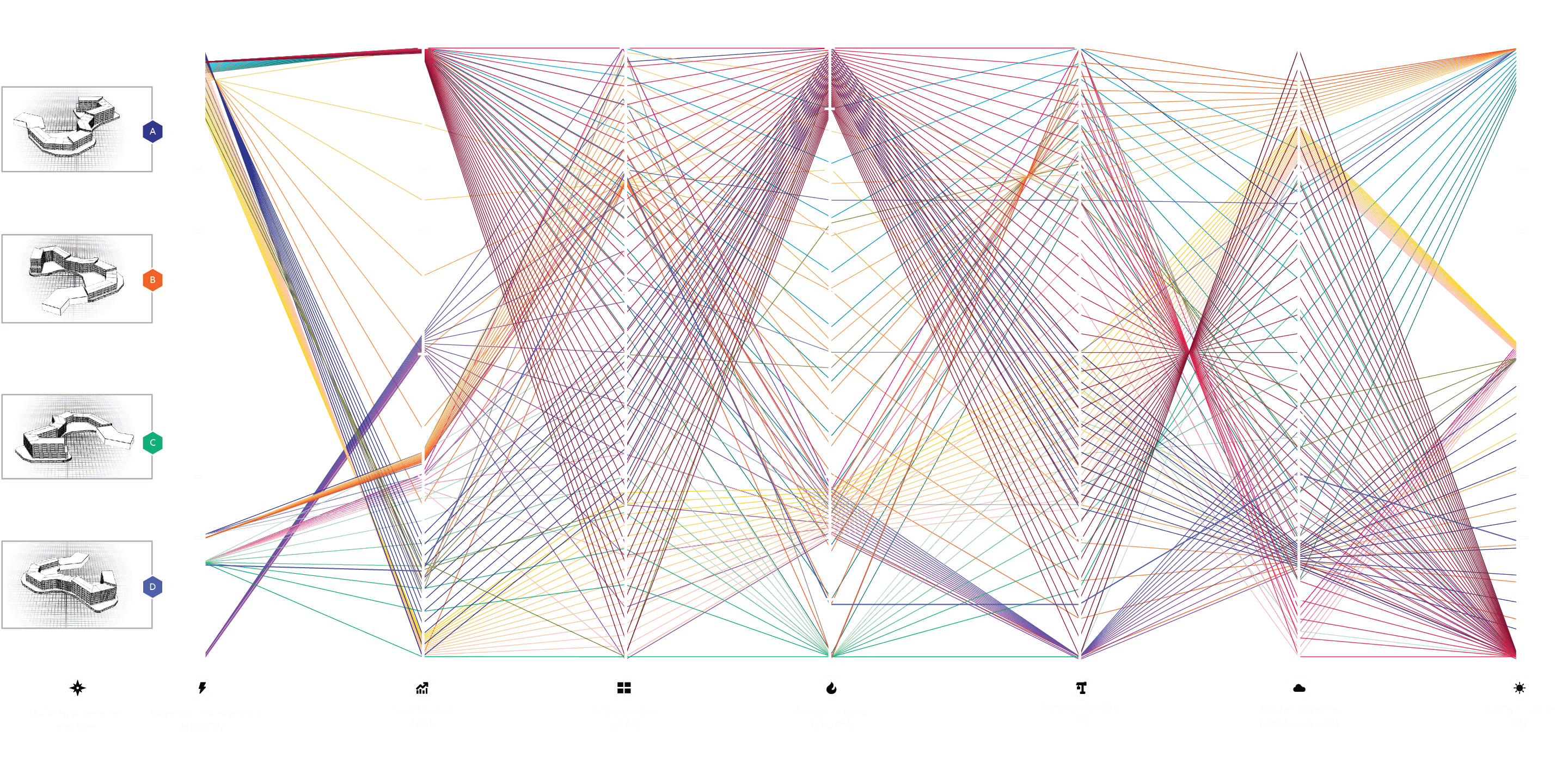Measurement Technology Laboratories’ future Long Meadow Campus in Minnesota will host an advanced aerosol physics research and development center and shared state-of-the-art laboratory space. Its sustainability goals are significant and include mass timber construction and net-zero operational carbon.
“We want to create a space that is human-centric and breeds innovation while also minimizing our impact on the environment,” says Tyler Bradley, vice president at Integrate, the company’s development group.
Energy use reduction is one of the most meaningful ways to minimize environmental impact. But with a typical energy modeling process, Measurement Technology Laboratories would be limited to evaluating only certain performance aspects—like cost, daylight levels, and thermal load—of very few design options. What’s more, those evaluations would require time-intensive reiteration among designers, engineers, and cost estimators.
Powered by artificial intelligence, SPEED is much faster—and, therefore, much cheaper. It’s also more comprehensive. Used at the earliest stages of design, it runs through thousands of variables, including building shapes, program and massing choices, and shading options. And it does this within 24 hours.
As exploratory design ideas for the Long Meadow Campus began to take shape, SPEED provided the design team with clear metrics on the potential carbon impact of multiple building form options. It also shaved off time ordinarily spent researching regulatory requirements by incorporating local energy code and carbon mandates.




